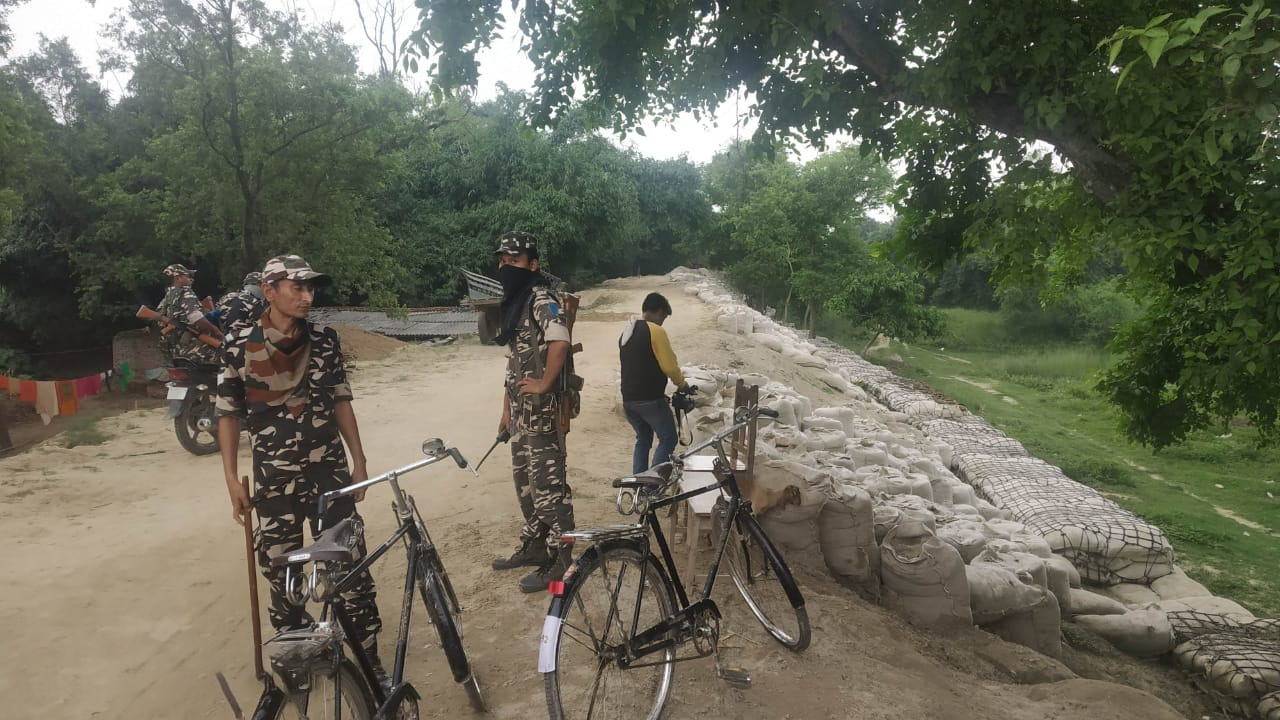SOURCE: SUNDAY GUARDIAN LIVE

As Nepal refuses to budge from its stand, a stretch of over 500 metres of embankment on the Lal Bakiya river in the Baluwa Guwabari area of East Champaran remains without repair and has now emerged as a flashpoint between people of India and Nepal. For want of repair, the crumbling embankment might cause devastating floods as the rivers originating from Nepal are already in spate.
Residents of Balwa Guawari panchayat on the Indian side are now daggers drawn with the people of Banjraha in Nepal. Reminiscent of the devastating floods in 2017 caused by the swelling waters of the Lal Bakiya river, residents of the Balwa Guwabari panchayat want immediate flood fighting work to be executed on the embankment. The same is being opposed by residents of Banjaraha in Nepal and the Nepalese authorities.
Flood control work was started by the state government prior to the monsoon and most of the work is already complete, but a stretch of 500 metres has been stopped from completion by Nepalese authorities.
Monsoon has already set in and the meteorological department has already predicted heavy to very heavy rainfall in the catchment area of most of the rivers originating from Nepal. It’s common knowledge that each year, Bihar is witness to devastating floods caused by swelling rivers coming from Nepal, and each year prior to the onset of the monsoon, the Bihar government undertakes flood control measures on a war-footing.
This is, however, for the first time that the Nepalese authorities have thrown a scanner in the works and are refusing to budge from their stand.
Nepal had recently stopped the flood fighting work on the embankment claiming it to be their land. The engineers were threatened and labourers forced to stop work as locals from Banjraha village in Nepal accompanied by Nepal armed police and senior officials stopped work on the embankment. The stalemate continues despite a distress call being made by the state government to the Centre to intervene into the matter and find a solution.
It’s significant to mention here that the western embankment falls well within Indian territory as the demarcation pillars numbering 347 to 346 fall at least 10 meters from the embankment towards Nepal side.
Dasrath Shah, an old and ailing resident of Balwa village which is located just at a stone’s throw distance of Banjraha village, recalled with horror, “2017 was very devastating for us. Even pucca houses got washed away in the swelling waters of Lal Bakiya. We want the embankment work to be complete, but the people from Nepal and Nepal Police are not allowing the work, even when the embankment is within Indian territory.” The old man was quick to add that apparently Nepal has of late started flexing its muscles at the behest of China.
Another resident of Baluwa Nazeer Miyan said, “This is for the first time that we have seen the relations turning sour between the two countries. We can’t go to the other side of the border. The Nepalese police beat us. When we have to meet our relatives living on the other side of the border, we call them to meet on the border. Recently, they even forcibly dragged one of our SSB jawans and mercilessly beat him up. But luckily we could save him.”
Nepal has been flexing its muscles and eyeing Indian territory even in other adjoining areas along the Indo-Nepal border. For decades, it has been expanding its base in Susta area of Valmikinagar. Of late, it also ventured into Indian territory along Pantoka Village in Raxaul area of Bihar. A watch tower and eight small outposts housing 4-5 Nepal armed force jawans were set up along banks of Siriswan river. The river has been changing its course dramatically and over the decades, has moved deep inside Indian territory. Right now, the river enters India near pillar number 393 and the Nepali authorities staked their claim on the land on the other side of the river and even set up posts there.
People of Pantoka village, on the other hand, claim that the land on the other side of the river is their ancestral property, but they are forced to flee from the land. The demarcation pillars on the other hand have been systematically uprooted and whatever pillars exist in the area are evidence enough of the fact that the Nepalese have encroached upon Indian land.
When this report was extensively aired on our sister channel India News, the Indian authorities swung into action and the Nepali armed police force were forced to remove their posts which they had set up along the Indian territory.
Tension has started building slowly along the border and this has much to do with the attempted encroachments by Nepal on Indian land.
One the one hand, the movement of essential goods and commodities from India to Nepal continues unabated; strict restrictions have been imposed on the movement of people from India to Nepal by the Nepal armed force. The relations between the two countries are perhaps at its lowest in centuries and this is reflecting on the people who live across borders sharing blood relations.
from Indian Defence Research Wing https://ift.tt/2CJRzpy
via IFTTThttp://idrw.org
No comments:
Post a Comment